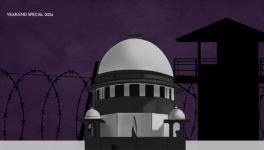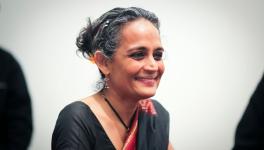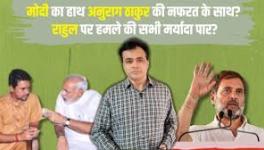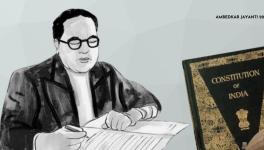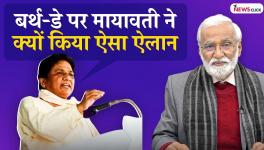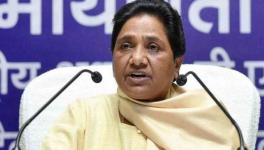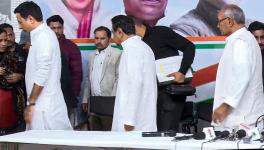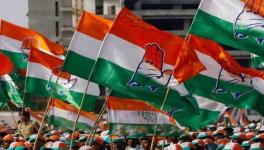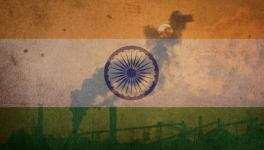Explaining Silence of Dalit Parties Despite Rising Atrocities
File Photo.
Notwithstanding lofty slogans, India’s Dalits, especially Dalit women, remain easy targets of violence. Yet, amazingly, when it comes to raising a voice against caste-based crime, it is the non-Dalit parties that seem to take the lead. Many analysts have criticised mainstream Dalit parties and leaders for their deafening silence in the face of growing atrocities against Dalits. They find it perplexing that even those political outfits which rely on Dalit votes to come to power do not express outrage publicly, nor launch movements against the rising incidence of heinous crimes.
These analysts have been wondering aloud why it is the Congress party and other national outfits, and not Mayawati-led Bahujan Samaj Party (BSP), for example, that hit the streets after the alleged gang rape and murder in Hathras recently. Instead, former Congress party chief Rahul Gandhi and his sister, the party’s general secretary for Uttar Pradesh, Priyanka Gandhi, sought justice for the young Dalit woman who died last month in a Delhi hospital. Meanwhile, the buzz in the commentariat was Mayawati’s anodyne statements—forget launching a mass movement against caste-based crimes against members of Dalit communities. True, Dalit activist Chandrashekhar Azad tried to campaign over the Hathras issue, but he simply lacks the heft to make an impact.
The extent of violence and atrocities perpetrated against Dalits makes these analysts ask: if Uttar Pradesh topped the list of states for anti-Dalit crimes, as recent data shows, why is it not the hub of an anti-discrimination social or political movement of the Dalits as well? Indeed, the National Crime Records Bureau (NCRB) showed in 2016 that there were 214 reported incidents of crimes per million Scheduled Caste (SC) population, which is higher than 207 in the previous year. In the same year, 40,801 cases of atrocities against Dalits were reported, also up from 38,670 in the previous year. While Uttar Pradesh accounted for 25.6% of these reported cases, Bihar and Rajasthan were not far behind.
These analysts would also lay out the latest NCRB report, whose data shows that in the last ten years, crimes against Dalits rose by a menacing 37%. Meanwhile, the conviction rate for such crimes rose by merely 2.5%. Over the same period, rapes against Dalit women reportedly increased by 50%. On average, in India, ten rapes of Dalit women were reported in 2019. Besides, media reports make it amply clear that Hathras-like brutal cases are commonplace in India, and in BJP-ruled Uttar Pradesh. Yet, they rue the near-total lack of political mobilisation against caste atrocities from Dalit-led outfits.
These analysts and commentators should read Gopal Guru, who teaches at the Centre for Political Studies in Jawaharlal Nehru University. Guru writes in the Dalit Studies journal that “...electoral democracy has not been able to create a positive sense of citizenship among the Dalits. In fact, they feel as if they are the passive recipients of fringe benefits that trickle down from this kind of democracy. Globalisation also has not led to any structural transformation in the lives of the Dalits, many of whom continue to lead degraded lives in the villages and urban slums.”
Guru reminds readers of the words of the first law minister, BR Ambedkar, who had said that as a modern nation India did attempt to organise society along egalitarian principles, but failed to enforce these principles as a part of social practice. The modern nation, he writes, vehemently asserts its geographical boundaries—but does not dissolve the pernicious boundaries that exist between, for example, the main village and the Dalit vadas (quarters or neighbourhoods). “National boundaries,” he writes, “invoke respect and pride, while the boundaries that divide society perpetuate a deep sense of contempt for the Dalit vadas.”
In other words, there has been little real change in the destiny of Dalits in many years. Probe a little, and the systemic deep-rooted discrimination and ill feelings against Dalits become apparent, even in caste Hindu (and non-Hindu) residents of large metropolises. Yet, it is in villages and small towns that atrocities against Dalits are a routine matter, where the lack of an organised voice to fight for Dalit rights guaranteed by the Constitution—as they are for every other citizens—is felt the most.
What those who criticise Dalit outfits—large or small, active in the political sphere or confined to social activism—forget is that Dalit leaders fear for the safety and well-being of their cadre. This is a primary reason why they do not take chances by bringing people out on the streets to protest. As Soroor Ahmad, commentator and journalist based in Bihar says, this lack of safety is itself a result of lacking political and social patronage. It is this isolation that has Dalits avoid plunging into confrontational politics.
“Dalit political parties understand this weakness of their communities and do not want to put individuals in danger by taking on the police or powerful elite castes,” Ahmad says. “If they bring their cadre out in huge protests, they will invariably be targeted by police, beaten, jailed for months, even years,” he adds. Besides, most Dalit families cannot afford the legal fees that long-drawn-out court battles entail. “They simply do not have resources at their disposal,” Soroor says.
While upper caste folk enjoy political and bureaucratic patronage, Dalits in North India also lack institutional support almost entirely. Managing lawyers, tapping into existing relationships with regional political leaders or local influencers—all the soft-power assets required to navigate India’s bureaucratic police and justice system—Dalit communities do not have.
The author and well-known Dalit rights activist, Vidya Bhushan Rawat, explains how fear operates along with other forces. It does limit Dalit political activism, he says, but there is more to it. For instance, the BSP, though the biggest Dalit political formation in North India, has its own politics and calculations. One definite calculation according to Rawat is that “she [Mayawati] does not want her cadre to be ‘fixed’ or confront police cases, as has been happening in Uttar Pradesh. “[Yet] politically, Dalits in Uttar Pradesh will still go with her, as she remains the tallest and most acceptable leader and there is no challenge to her,” he says.
According to Rawat, Mayawati is currently focusing on politics and strengthening her party’s strategies. Chandrashekhar Azad might be getting good coverage in the media, but he will not have a political impact in Uttar Pradesh. “He has not shown maturity—Mayawati knows that reacting to every issue will only polarise people. And she is eyeing Brahmin voters who are upset with Yogi Adityanath. Hence, if she plays her cards well, they might come back to her,” Rawat says.
Chandrashekhar Azad’s outfit, the Bhim Army, Rawat rightly points out, is still a new entrant in Dalit activism. “It might claim to have raised people’s issues, however, sometimes, a kind of over-reaction can end up helping only the BJP. For instance, the Bhim Army’s presence in the anti-CAA protest...only helped the BJP polarise and [eventually] turn a people’s struggle into a raw communal issue,” says he.
Herein lies the crisis all politics of social justice confront. If Dalits dare protest in numbers, they risk polarising the caste Hindus and inviting the ire of an angry state. On the other hand, if an issue of significance to Muslims is raised, it polarises a significant chunk of Hindus who are under the spell of Hindutva. Rawat says, “The Bhim Army needs to work a lot [more] and build a network of marginalised sections. There is an urgent need for Dalit organisations to realise the utmost importance of working silently for some time.”
What he means is that in India’s tricky social scenario—more and more rife with communal divisions and rigid caste hierarchies—media attention may be easy to come by, but solid movements of the kind that Kanshi Ram built can only happen “outside the media glare”.
It is thus a double whammy for the Dalits, as it is for Muslims, both of whom face oppression and yet cannot easily combine forces to launch a strident political mobilisation. Doing so might end up furthering their social and political marginalisation. This is especially true of the Dalits, who have remained at the margins of Indian society despite tall promises and legal provisions to support them and other marginalised communities.
This is not to deny the diligent efforts of many Dalit activists and lawyers over past decades, which is why the police have finally started registering FIRs in which the Atrocities Act is cites—more often than earlier. However, it is also obvious that these cases are typically registered after immense public pressure, as happened in the Hathras incident. And, even after cases are registered, prosecution those who commit crimes against Dalits remains pathetically low. For all these reasons, Dalit autarky is a dream that may remain unfulfilled unless, as Gopal Guru signals, the social stigma and discrimination attached with caste is first tackled at a social level.
The author is a writer and columnist. The views are personal.
Get the latest reports & analysis with people's perspective on Protests, movements & deep analytical videos, discussions of the current affairs in your Telegram app. Subscribe to NewsClick's Telegram channel & get Real-Time updates on stories, as they get published on our website.










